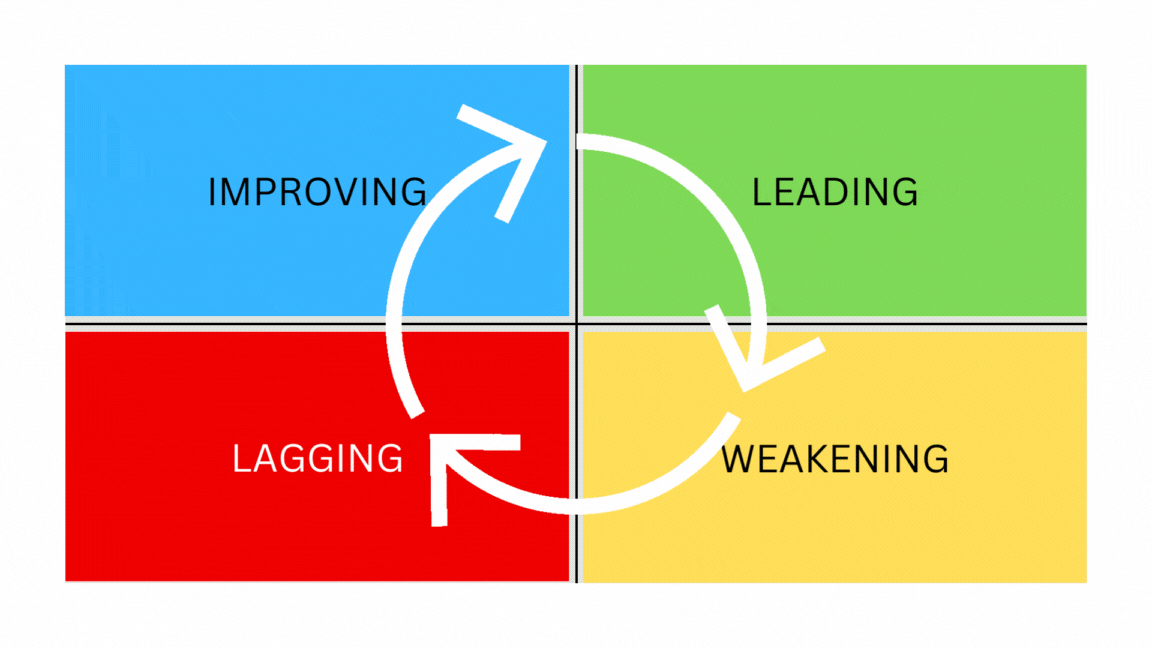Relative Rotation Graph
A technical analysis tool to identify the underperforming and out performing securities.
Understanding Relative Rotation Graphs: A Simple Guide
Investing can be complex, especially when deciding which stocks or sectors to focus on. The Relative Rotation Graph (RRG), developed by Julius de Kempenaer, provides a powerful tool to visualize the performance of various securities relative to a benchmark.
What is a Relative Rotation Graph?
An RRG is a two-dimensional graph designed to help investors identify which securities are outperforming or underperforming relative to a benchmark. The x-axis represents the relative strength ratio, and the y-axis represents relative strength momentum.
How to Read an RRG
The RRG is divided into four quadrants:
- Leading: Securities in this quadrant are strong with high momentum, suggesting continued good performance.
- Weakening: Securities are strong but losing momentum, indicating potential decline.
- Lagging: Securities here are weak with low momentum, showing poor performance.
- Improving: Securities are gaining momentum and may soon enter the Leading quadrant.
Securities typically move clockwise through these quadrants, providing insight into their performance cycle.

Figure 1: General Relative Rotation Graph Cycle
Why Use RRGs?
RRGs offer a clear visual representation of relative performance, simplifying complex technical analysis. They allow investors to quickly identify which securities to consider or avoid, making them valuable for both novices and experienced investors.
An Insightful Tool for All
The RRG provides an easy way to track the relative performance of different securities. Understanding relative strength and momentum can help you make more informed investment decisions and enhance your portfolio.
For more detailed information on RRGs, visit Investopedia’s article on Relative Rotation Graphs.
If you’re interested in tracking US sector ETFs using RRGs, check out my web app. It’s designed to help monitor US sectors, though it does not offer investment advice.
Relative Rotation Graphs are not just charts; they provide insights into market dynamics. Consider using RRGs for your investment strategies and see how they can improve your decision-making.
This article is inspired by the work of Julius de Kempenaer and aims to make Relative Rotation Graphs accessible to everyday investors.
References:
- Julius de Kempenaer. RRG Research
- Investopedia: Relative Rotation Graph
- RRG for US Sector ETFs
- Medium Article